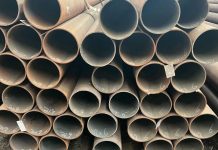Schedule 40 pipes are predominant in industrial, commercial, and residential applications because of their adjusted properties and flexible usefulness. Understanding the components that decide their function is crucial for ideal performance and longevity. Key components include material composition, diameter, divider thickness, temperature and pressure evaluations, chemical compatibility, establishment hones, and adherence to regulatory guidelines.
Different materials like PVC, steel, and CPVC offer unique preferences, such as corrosion resistance, quality, and temperature resistance. The pipe’s dimensions influence stream capacity and weight resistance, whereas proper installation and maintenance guarantee basic integrity. By considering these components, engineers, and installers can make informed decisions, ensuring that Schedule 40 pipes meet the particular needs of their projects and convey reliable, long-term performance.
Important Factors Influencing Schedule 40 Pipe Performance
Schedule 40 pipes are widely used in a variety of commercial, mechanical, and residential applications because of their adjustable properties and diverse convenience. Understanding the parameters that govern sch 40 pipe dimensions performance is crucial to guaranteeing optimal effectiveness and longevity in their intended applications. Here, we explore the main factors that influence Schedule 40 pipes’ operation and offer a careful rundown of the perspectives that must be taken into account to utilize them effectively.
The distance and Wall Thickness
The diameter and wall thickness of Schedule 40 pipes are essential determinants of their function. These dimensions affect the pipe’s stream capacity, weight rating, and auxiliary judgment. For example, a bigger internal diameter (ID) allows for a higher stream rate, which is basic for systems requiring considerable liquid exchange. Thicker dividers give more noteworthy weight resistance, vital for applications including high internal pressures.
Temperature and Pressure Ratings
The operational environment’s temperature and weight essentially impact the selection and execution of Schedule 40 pipes. Diverse materials and sizes of Schedule 40 pipes have shifting temperature and weight appraisals. For occasion, PVC channels have a lower temperature edge compared to CPVC, which can handle higher temperatures without debasing. The weight rating of a pipe depends on its diameter and wall thickness, and appropriately coordinating the pipe’s weight rating to the system’s requirements prevents failures and ensures security.
Chemical Compatibility
The chemical compatibility of Plan 40 channels with the substances they will pass on may be a crucial factor. Exposure to contradictory chemicals can lead to degradation, spills, or catastrophic failures. For example, PVC is safe for numerous acids, bases, and salts but isn’t appropriate for natural solvents. Steel can handle a wide run of chemicals but is inclined to erosion if not properly secured. Evaluating the chemical properties of the liquids and guaranteeing compatibility with the pipe material is essential for keeping up usefulness and security.
Installation Practices
The strategy of introducing Plan 40 channels influences their functionality and life span. Legitimate establishment hones incorporate utilizing suitable fittings and cement for PVC pipes or welding strategies for steel pipes to guarantee leak-free joints. Satisfactory support and anchoring avoid listing and mechanical stretch, which can lead to untimely failure. Also, securing channels from UV presentation, extraordinary temperatures, and physical damage upgrades strength.
Regulatory and Industry Standards
Compliance with important administrative and industry benchmarks guarantees that Schedule 40 pipes meet the essential security and execution criteria. Benchmarks such as ASTM, ANSI, and ISO give determinations for fabric quality, guaranteeing consistency and unwavering quality within the pipe material. They too guarantee dimensional exactness for compatibility and execution and incorporate testing and certification to confirm that channels can withstand indicated conditions.
Conclusion
The function of Schedule 40 pipes is decided by a multitude of components, counting material composition, dimensions, natural conditions, chemical compatibility, installation practices, regulatory benchmarks, and maturing. Understanding these components is crucial for selecting the proper pipe for particular applications and guaranteeing its ideal execution and life span.









